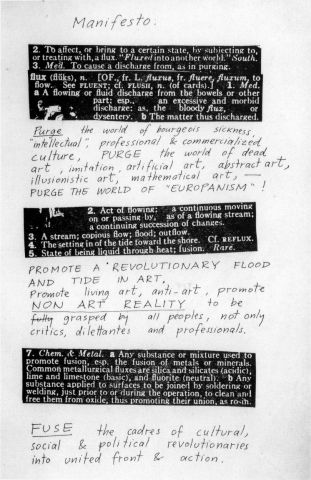The first weekend in March is usually reserved for the International Contemporary Artists’ Book Fair here in Leeds and this year was no exception. However, unlike previous years when it was held in Parkinson Court at the University of Leeds, this year it moved to the newly opened Tetley Centre for Contemporary Art and Learning.
This was beneficial for the fair in a number of ways. Firstly, many of the emerging artists’ book fairs in the UK and abroad are linked to contemporary art galleries, creating more of a critical context and audience for the work. Also, attempts in previous years to create visibility for fringe events and exhibitions around the book fair had always been quite difficult due to the locations being spread across the city. Having the fair situated inside The Tetley Gallery gave the opportunity to create a more cohesive collection of exhibitions.
Artist Book Stall
This year was also the first time I’d had hosted a stall on behalf of my own work, rather than as part of a group or collective. I usually see these events as more of a showcase for work, a chance to meet potential collaborators and discuss ideas, so it was a pleasant surprise to also sell a fair amount of work, taking over £90 in total.
In particular, I had a very good response to one of my newest works ‘Moon Book’, which was developed as a kind of almanac, helping its owner to make decisions according to the phases of the moon. Despite its obvious fictitious status as a historical artefact, audiences at the book fair seemed to enjoy the interactive and hermetic qualities of the work which was reflected in sales. I was also pleased to find that one of the buyers was a collector for the Leeds College of Art Library, which means I have work in another public artist book collection.
Question for Seller
Alongside the fair and exhibitions there was also a rich programme of events, talks and performances. Although I had to look after my stall most of the time, I did manage to sneak off to a few things including the talk by Nicky Bird about her photographic practice, entitled Question for Seller.
The Question for Seller project emerged as a response to the sale of family photographs on Ebay, which Bird purchased an then reappropriated into her own work in the form of a limited edition book. When purchasing the photographs, she always sent the seller the same question through the Ebay interface, “How did you come across the photographs, and what, if anything, do you know about them?”
Producing art through online networks
I found this work interesting on a number of levels. Firstly, the use of Ebay as a way of sourcing images and interacting with project participants established an interesting methodology for the creation (or co-creation) of collections. The ability to contact sellers through the online platform and integrate their responses into the work also evidenced new ways of generating content. Finally, the interrelation of online and offline in the production of art, (now referred to in some circles as Post-Internet), utilised a networked way of thinking, creating stronger connections between creator, audience(s), and participants.
The transformation of the image from screen-based phenomenon to real life object and then back to digital facsimile also resonated with some of the ideas I’d been working with, particularly in relation to my Imaginary Museum curation project (from week 76) and my interest in the digitisation of museum and gallery collections as part of the Digital Humanities. The questions surrounding the ontology of each of these image-objects, identical though they may appear, are ones that seem to be coming to the forefront of my research and practice, so I’m interested to see where this leads in producing reproductions of my own work.
Further reading:
Wretched of the Screen by Hito Steyerl, eflux Journal, Sternberg Press. Edited by Julieta Aranda, Brian Kuan Wood, Anton Vidokle, 2012
Roland Barthes, The Rhetoric of the Image
Sculpture and its Reproductions, Edited by Anthony Hughes and Eric Ranftt, 1997


